Sweeping NIH cuts jolt dementia research team
Published in Health & Fitness
DAVIS, Calif. -- For weeks, no one could tell Dr. Charles DeCarli whether the $53 million grant powering his lab’s ambitious dementia research project would be renewed.
“It was horrible,” the neurologist said. “It was really hard to face the potential of losing all of it, the money, everything I’d worked so hard for.”
Then came the Monday morning call in late March. A program officer at UC Davis informed him the National Institutes of Health had sent a termination letter. His funding was gone — five years into a seven-year study tracking brain health in 1,700 diverse participants.
He was shocked at first, but when that wore off, he and his research team sprang into action. Within hours, they began crafting an appeal that would grow to 13 pages. Letters of support followed: two pages from the Alzheimer’s Association, 10 more from UC legal counsel.
By that Wednesday, they submitted it — and the wait began. The response that funding was restored would come much sooner than DeCarli expected, he said, but it didn’t immediately dispel the impact of weeks of angst and stress.
The DeCarli lab’s grant was among at least 678 such awards that were casualties in a sweeping overhaul of the NIH by new leadership, according to a lawsuit filed in Massachusetts challenging the terminations.
All told, researchers and other plaintiffs said, $2.4 billion worth of funding had been dropped: Universities slashed budgets, froze hiring and rescinded graduate student offers.
The implications have extended far beyond lost experiments or even college campuses, said Jesse Rothstein, a former chief economist for the U.S. Labor Department.
But until the total amount of the funding losses is quantified, Rothstein said, it’s hard to tell whether this is just a hiccup or a seismic shift that threatens the entire research infrastructure that has powered U.S. innovation for generations.
“Ever since basically Sputnik, the U.S. has been operating on a model where the world leaders in scientific research work as part of a partnership between the federal government and the research universities,” said Rothstein, a professor of public policy and economics at UC Berkeley. “The federal government provides research funding, and the research universities do the work. That’s led to amazing scientific discoveries.”
For nearly five years, DeCarli and his research team have tracked brain scans and blood samples from 1,700 Americans: one-third of them Latino, a third Black and a third white. They had two more years to go in their study. Their goal? A diagnostic tool for primary care doctors to detect early dementia risk — and potentially intervene before symptoms took hold.
“We have a tool for heart attack, for example. You can go online and get your cardiovascular or heart risk score. This is what we’re trying to get for the risk of brain impairment,” DeCarli said. “We’re trying to do science that will improve the lives of the average older population.”
In 2023 alone, NIH awarded nearly 73% of its $48 billion budget in grants fueling jobs, lab infrastructure, and economic ripple effects. For every $1 in NIH funding, nearly $2.50 in economic activity is generated, according to United for Medical Research.
Silent wave of disruption rocks universities
The loss of any NIH funding will be felt in college towns and large metropolitan areas around the country, said Fred Treyz, the chief economist at Regional Economic Models Inc. in Amherst, Massachusetts.
“Let’s say there’s a loss of a million dollar grant. That would be a million dollars less spent for graduate fellowships and rents of research facilities and professor salaries,” Treyz said. “That’s an impact to the entire community, the taxes paid to the school system, the hiring of teachers, and restaurants, retail, all the other services.”
At DeCarli’s UC Davis lab, losing the grant would be immediate and personal. Addison Berg, 24, was finishing up a two-year term as a junior research specialist. He hoped to move into a more senior role — until the UC system enacted a hiring freeze. The grant termination meant he was in limbo, unsure if he would be able to afford rent for much longer, much less plot a career trajectory.
“The goal is to give them (junior specialists) the opportunity to consider what direction they want to take their career development,” DeCarli said. “Almost everyone here who’s a junior specialist has applied into a graduate program, or is going on to do something else. So this is an incubator kind of experience.”
Berg said he’d been working with DeCarli to ensure he’s doing the research needed to earn a position in a world-class PhD program, but the termination of DeCarli’s NIH grant had stymied those plans.
DeCarli said Berg had demonstrated a talent for research. Berg’s father has tinnitus, DeCarli said, and since hearing loss can contribute to brain impairment, Berg had made a research proposal requesting a small grant from the Tinnitus Society to analyze some data that could increase the understanding of the phenomenon.
“And they said, go ahead with it,” Berg said, interjecting with news DeCarli had not yet heard.
“Did they really?’ DeCarli said, his look of surprise turning into one of pleasure and pride.
But how long could that keep the young University of Southern California grad in DeCarli’s lab? Since receiving news of the dramatic NIH cuts and UC hiring freeze, Berg said he’d considered applying for research positions in England and continuing his studies there, where his brother resides.
While DeCarli has other NIH-funded grants, the $53 million award catapulted him into the ranks of the agency’s 10 top-funded scientists. In his appeal, defended his work, explained its value and prove that it benefited human health.
Challenging the shift in the NIH mission
In the lawsuit filed in Massachusetts district court, labor groups and U.S. researchers said that NIH Director Jay Bhattacharya and Health and Human Services Secretary Robert Kennedy Jr. have “upended NIH’s enviable track record of rigor and excellence, launching a reckless and illegal purge to stamp out NIH-funded research that addresses topics and populations that they disfavor.”
In February, the researchers said, Kennedy and Bhattacharya canceled meetings of peer review panels like the ones that scrutinized DeCarli’s proposal for brain health risk tools.
Research teams like DeCarli’s spend about a year working to get federal grant funding, said Dr. Stephen Carpenter, an infectious disease specialist at Case Western Reserve University in Cleveland, Ohio. They must write a research plan, develop a budget, outline the contributing staff and agencies and spell out how they will protect animal and human subjects.
Then, Carpenter said, they submit that plan, likely totaling about 150 pages, to the NIH where it passes through staff and gets distributed to peers who anonymously review the grants and provide feedback. It requires answering questions, lots of them.
DeCarli successfully navigated that gantlet, securing high enough scores from his peers to merit funding. Fewer than 10% of research grants submitted to NIH achieve that feat, Carpenter said.
DeCarli’s lab is working on more than a dozen other research projects, he said, and he’s still waiting to see whether other NIH grants will be affected. Essentially, every study is an opportunity for the junior scientists in his lab to advance their careers.
While he is approaching retirement in five years, many of the 20 or so researchers in his lab are just starting out or are in the middle of their working years. He thought he had time to help them launch independent careers, he said, but the loss of his largest grant would disrupt that timeline.
“When funding for a lab dries up, there’s usually no coming back from that for a researcher,” Carpenter said. “It takes more than a decade for researchers to establish themselves after their training and continuously publish and obtain grant funding, train students and make new discoveries.”
NIH loss measured in more than dollars
Several researchers on DeCarli’s team said that, while they were concerned about a disruption to their careers, their thoughts have largely been on the ethical quandary they found themselves in: They might have to leave study participants in the lurch.
It would be no understatement to say that a dementia risk score would benefit millions of people. The World Health Organization has estimated that 10 million new cases of dementia are diagnosed each year around the globe. That’s an average of one new case every 3.2 second.
Staff research assistant Stephanie Sinclair, 25, expressed deep concern for the 1,700 participants who agreed to contribute to the seven-year study through 2027. At the same time, she also has been personally buffeted by the uncertainty in the normally predictable world of research universities.
Recently, she got what she described as a “jarring” phone call from a PhD program where she had interviewed for a spot. They told her she was a top applicant, but the phone call was to inform her that they no longer could offer her a position because of the uncertainty about the impact of the NIH funding cuts.
While disappointed, Sinclair said, she knew she should consider herself fortunate because she has other offers.
Hearing her tell her story, DeCarli recalled that, as a result of the UC hiring freeze, he had to make a similar call to a graduate student he had hoped to employ. He also phoned a Korean scientist slated to be a visiting researcher in his lab next year to tell him: “Look, there may be nobody here but you.”
When the scientist told DeCarli that he would stick with his plan despite the turmoil, the UCD research leader said he told him to avoid saying anything bad about President Trump, explaining that some U.S. visitors had been denied entry over their comments despite the nation’s vaunted free-speech protections.
Nightmarish stories about deportations and detentions have rattled associate professional researcher Pauline Maillard, a French-born scientist who came to the Davis area about 15 years ago to work with DeCarli and other UCD researchers.
She has been debating whether to attend what she described as the world’s largest international meeting aimed at advancing dementia science in Toronto this summer because she doesn’t know what will happen when she tries to re-enter the United States. These conferences, she said, are where researchers can hear new ideas and exchange information with other scientists.
Maillard has made a name for herself by mapping the brain’s white matter, the silent highways that carry thoughts and impulses through the mind. She also has been waiting to learn whether an NIH grant proposal she made will be evaluated. The NIH canceled a meeting earlier this year where top scientists were scheduled to review it.
“We cannot exist like this, not knowing whether the funds are coming or not knowing necessarily whether grants are even being evaluated,” Maillard said.
Looking back, the Massachusetts lawsuit stated, the NIH has terminated an average of about 20 grants in any given year.
Is science in the US in retreat?
The NIH cuts, the targeted immigration enforcement, the pauses in graduate school admissions are all having a significant chilling effect on research and on training, Carpenter said.
DeCarli said the chaos at NIH has left a vacuum that French institutions of higher learning have used to recruit top research staff and graduate students from the U.S. and other countries.
“We really don’t know what the impact is going to be, but it’s going to be longer-term than we may feel in the next two to four years, which is beyond the scope of the typical political cycles,” Carpenter said.
The researchers suing the NIH and HHS said the two agencies are acting in direct conflict with laws requiring the NIH to “improve health, revolutionize science, and serve society” for the benefit of all Americans. NIH leaders are making indiscriminate cuts that target keywords such as diversity, equity and inclusion, or DEI, rather than the merit of the science.
NIH-funded research has won more than 100 Nobel Prizes, the researchers explained in their lawsuit, and from 2010-19, more than 99% of the drugs approved by federal regulators were developed with the support of NIH grants.
“Financially, this type of investment helps both our country and our local communities,” Carpenter said. “Furthermore, this investment generates life-saving discoveries in cancer, infectious diseases, autoimmune disease, heart disease, obesity.“
At the UC, biomedical discoveries have yielded billions of dollars in royalty fees, patent income and reimbursement payments. UC researchers have played pivotal roles in developing such advancements as gene cloning, a widely used Hepatitis B vaccine, a widely used prostate cancer medication and the groundbreaking CRISPR gene-editing tools.
The University of California has secured close to $4 billion a year in research grants from the NIH and other federal agencies, Rothstein said. United for Medical Research estimated that the UC’s NIH funding supports 56,000 jobs and more than $13.6 billion in economic activity in California. In turn, the UC discoveries have buoyed the state’s life sciences sector where roughly 330,000 people are employed.
The UC researchers secure more NIH funding than some states have. In Ohio, for instance, NIH grants for biomedical research supports about 13,000 jobs, Carpenter said, and total NIH funding in the state is more than $1 billion.
Equally as important, without NIH incentives such as student loan repayment programs, he said, it’s hard to attract medical school students to go into some medical professions such as infectious diseases because they will earn less than they would in other medical specialties. Yet, pandemics such as AIDS, swine flu and COVID-19 have proven how crucial these specialists are to saving lives.
Dr. Colleen Kelley, who chairs the board of the HIV Medicine Association and leads federally funded research at Emory University, said that, with these NIH cuts, the United States is ceding leadership in medicine and biosciences, and that in turn will result in the almost certain loss of a generation of young researchers.
“The chaos we have experienced, and there’s no better word than chaos in the last several weeks in the research enterprise, has had significant impact on medical science and has halted progress in so many areas,” Kelley said. “We have received instructions not to use words that are really essential parts of science and public health in the communities that we serve.”
Some words and acronyms that could trigger a loss in funding, Kelley and others have said, include DEI, transgender health, vaccine hesitancy, LGBTQ, HIV and health equity.
There’s a climate of fear and confusion and feelings of being in the crosshairs, she said. The Trump Administration has often used the word “efficiency” to describe their aim, Kelley said, but what’s happening is the opposite.
At UC Davis, DeCarli and his team are still processing their rollercoaster ride of emotions. On Friday, they received the welcome word from NIH leaders that their funding will continue. They will have to file more progress reports, DeCarli said, but he has confidence in his team’s ability to show the value of the work.
Berg will be able to stay on, he said, and his staff has gotten some breathing room.
“There’s a little bit of terrorism in what’s being done,” DeCarli said. “The definition of terrorism is that you strike fear more deeply than the actions you take. I think that’s what’s happening. People are really scared.”
©2025 The Sacramento Bee. Visit at sacbee.com. Distributed by Tribune Content Agency, LLC.

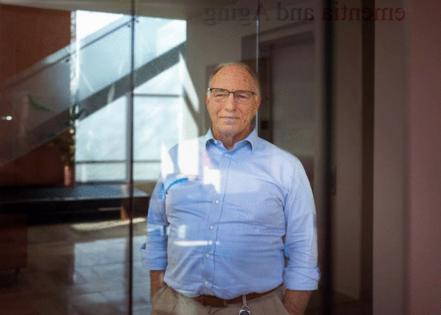



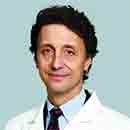
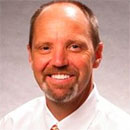



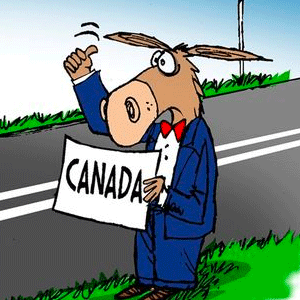
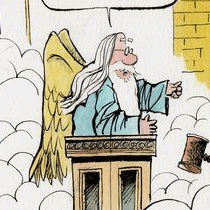

Comments